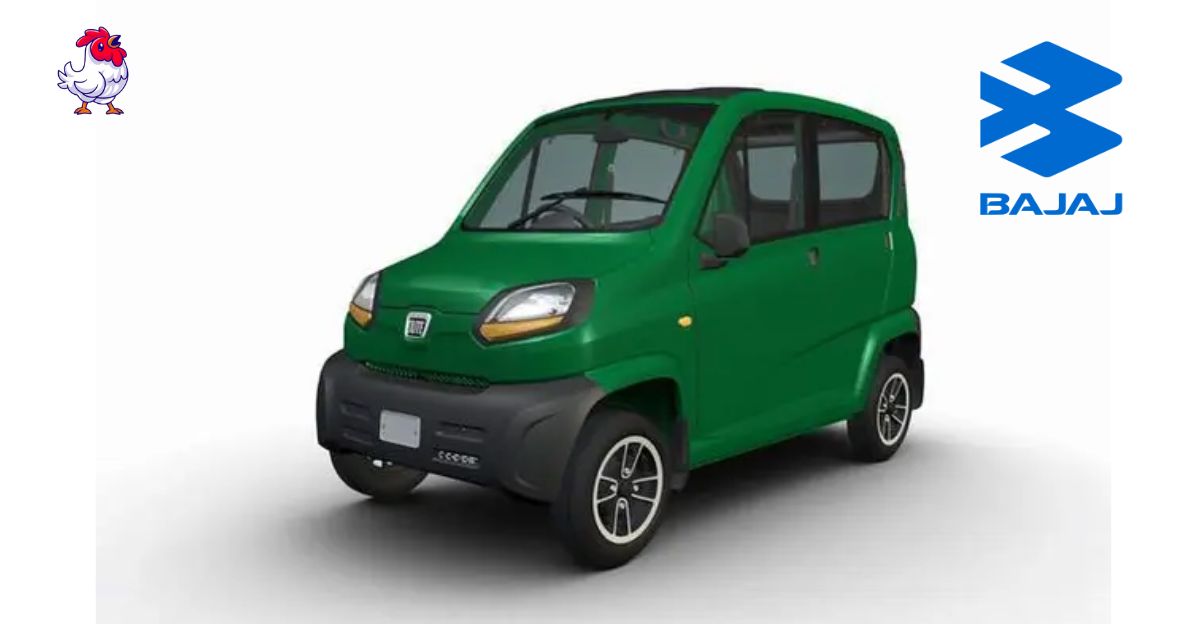In the bustling chaos of urban traffic, the demand for compact, fuel-efficient, and affordable vehicles has never been higher. Bajaj Auto, India’s two- and three-wheeler giant, responded to this need with a vehicle that raised eyebrows, sparked debates, and ultimately found its niche — the Bajaj Qute. Although often misheard or spelled as “Bajaj Cute”, this quadricycle has steadily carved out a space in the market for urban mobility.
In this blog post, we explore what makes the Bajaj Qute (a.k.a. “Cute”) such a unique player in the small vehicle segment, why it appeals to specific users, and whether it’s truly a car, a quadricycle, or something in between.
What is the Bajaj Qute?
The Bajaj Qute is a four-wheeled microcar technically categorized as a quadricycle. It’s not classified as a full-fledged car under Indian automobile regulations but fits into a niche category designed primarily for intra-city travel and short commutes.
Launched originally as the RE60 concept in 2012, the Qute was aimed at replacing traditional auto-rickshaws and offering a safer, enclosed alternative. It finally hit the Indian market in 2019 after facing several regulatory hurdles.
Design and Build: Small but Functional
The Qute is a compact vehicle that screams utility. Measuring just under 2.75 meters in length and 1.3 meters in width, it is significantly smaller than even the smallest hatchbacks on the market. Its tiny turning radius makes it ideal for weaving through narrow alleys and congested roads — the perfect companion for crowded Indian cities.
From a design standpoint, it’s not trying to win beauty contests. Instead, it focuses on functionality. There are no power windows or advanced infotainment systems. You get a basic dashboard, simple interiors, and seating for four in a 2+2 layout. Despite its compactness, there’s decent headroom and legroom — especially when compared to three-wheelers.
Engine and Performance: Built for Economy, Not Speed
The Bajaj Qute is powered by a 216cc, single-cylinder, water-cooled engine, available in both petrol and CNG variants. The engine produces about 13 horsepower with a top speed of around 70 km/h — numbers that may seem laughable when compared to regular cars, but they serve the Qute’s intended purpose well.
Fuel efficiency is where the Qute really shines. It offers a mileage of up to 35 km/l on petrol and 43 km/kg on CNG, making it one of the most fuel-efficient four-wheelers in India.
The Qute features a 5-speed sequential manual transmission, similar to motorcycles, which helps keep the cost and maintenance low. Acceleration is modest, but for a city-focused vehicle, it’s sufficient.
Who is the Bajaj Qute For?
While the Qute may look like a toy car to some, it’s actually a practical solution for several user segments:
- Fleet operators and shared mobility providers: Its low running cost and fuel efficiency make it a favorite for last-mile connectivity services.
- Delivery and logistics businesses: The Qute’s small size and rear cargo capacity (especially with the rear seats folded down) make it a practical delivery vehicle.
- Auto-rickshaw drivers upgrading: For those looking for better weather protection, safety, and comfort than a traditional three-wheeler, the Qute offers a viable alternative.
Pros of the Bajaj Qute
- Incredible fuel economy
- Affordable price tag (around ₹2.6–2.8 lakhs ex-showroom)
- Low maintenance costs
- Compact design suited for urban traffic
- Eco-friendly, especially the CNG variant
Cons of the Bajaj Qute
- Not highway-capable due to low top speed and light frame
- Minimal features (no AC, airbags, or ABS)
- Limited comfort and cargo space
- Regulatory restrictions in some Indian states where quadricycles are not yet fully legalized for private use
Is the Bajaj Qute a Car?
Technically, no. It is classified as a quadricycle, which places it somewhere between an auto-rickshaw and a compact car. It does have four wheels, doors, and a steering wheel — all the elements of a car — but it lacks many features and safety standards required for full passenger vehicles.
Final Thoughts: A Cute Solution for the Right Use Case
Whether you call it the Bajaj Qute or affectionately refer to it as the “Bajaj Cute”, there’s no denying its charm lies in its simplicity. It’s not meant to replace your family hatchback or take you on highway adventures. Instead, it serves a specific, crucial purpose — safe, efficient, and budget-friendly intra-city transportation.
